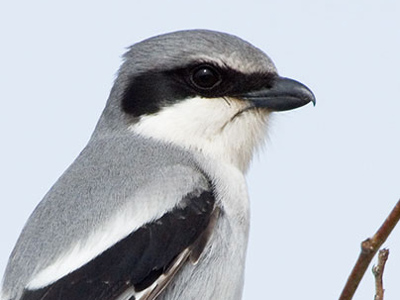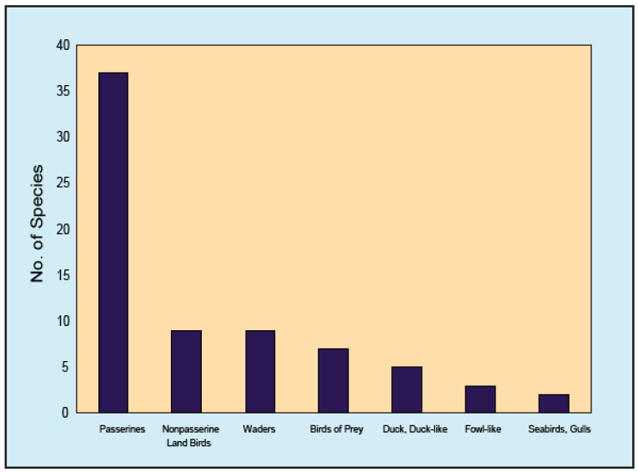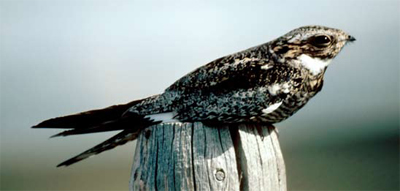Methods

© Robert Shantz
The Colorado Natural Heritage Program conducted bird surveys at Bent’s Old Fort National Historic Site (NHS) in summer 2001 and spring 2002. Few bird surveys existed at Bent’s Old Fort NHS prior to 2001. The 2001 surveys were park wide and the 2002 surveys were concentrated at freshwater wetlands and selected uplands habitats to increase chances of observing additional (undocumented) avian species. Wetland areas included the Arch Wetland, Day Pond, and the Arkansas River riparian corridor. In total, 50.9 hours of bird surveys were conducted.
Status

A total of 72 species were documented during the 2001 and 2002 surveys; 52 species in 2001 and an additional 20 species in 2002. The Bent’s Old Fort NHS breeding bird master species list included 92 species, but this inventory documented six species in 2001 and 10 species in 2002 that were not included on the master list. Adding these species to the list makes a total of 108 birds that may occur at Bent’s Old Fort NHS. Therefore, this inventory documented 72 of 108 (67%) expected avian species.
The majority of the species recorded were passerines (See graph above). Passerine species observed include the Western kingbird (Tyrannus verticalis), grasshopper sparrow (Ammodramus savannarum), common yellowthroat (Geothlypis trichas), and loggerhead shrike (Lanius ludovicianus). Species observed from the remaining bird groups include the common nighthawk (Chordeiles minor), red-headed woodpecker (Melanerpes erythrocephalus), American bittern (Botaurus lentiginosus), white-faced ibis (Plegadis chihi), Northern harrier (Circus cyaneus), mallard (Anas platrhynchos), cinnamon teal (Anas cyanoptera), Northern bobwhite (Colinus virginianus), and black tern (Chlidonias niger).

Robert Bennetts / NPS
There was evidence of birds breeding during the 2002 survey. Northern flicker (Colaptes auratus), barn swallow (Hirundo rustica), European starling (Sturnus vulgaris), Western meadowlark (Sturnella neglecta), Bullock’s oriole (Icterus bullockii), and house sparrow (Passer domesticus) were observed visiting active nests. Rock wrens (Salpinctes obsoletus) were collecting and carrying nesting materials and red-tailed hawks (Buteo jamaicensis) and Western meadowlarks were carrying food. Male birds were singing on territories including the common yellowthroat, red-winged blackbird (Agelaius phoeniceus), and yellow-headed blackbird. Mallard, blue-winged teal (Anas discors), cinnamon teal, ring-necked pheasant (Phasianus colchicus), American coot (Fulica americana), rock wren, American robin (Turdus migratorius), Northern mockingbird (Mimus polyglottos), brown thrasher (Toxostoma rufum), brown-headed cowbird (Molothrus ater), and orchard oriole (Icterus spurius) were seen traveling, loafing, perching, or foraging in pairs.
Although the rate of documentation of new bird species declined as the field survey progressed in 2002, many additional species probably remain undocumented at Bent’s Old Fort NHS. Some species may not have been detected because they occur at low densities and/or they make only brief appearances at the site.
Contacts
James P. Gionfriddo, Denise R. Culver, & Joe Stevens, Colorado Natural Heritage Program
Reference
Gionfriddo JP and Stevens J. 2003. Survey of Bents Old Fort National Historic Site for Breeding Birds and Anurans. Fort Collins, Colorado.
Prepared by the Southern Plains Network Inventory and Monitoring Program, 2015.
Part of a series of articles titled Southern Plains Bird Inventories.
Last updated: February 1, 2017
